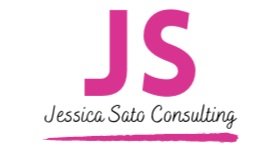3 Elements To A Strong Business Design
When was the last time you took a hard look at the design of your business?
Back in my corporate training days, I used to teach a tool called the STAR model. The intention behind it was to ensure that everything that was happening in the organization was connected and aligned to the strategy. The question I often posed to managers and executives was, “Have you designed your organization strategically or defaulted to what’s convenient or always been done?”
Design, by definition, means to create, fashion, execute, or construct according to plan which means it was done deliberately. There was intention and specificity in mind, as opposed to your business happening by accident or default.
I’ve often reflected on that model for my own business, and at least twice a year, I push the pause button to examine whether I’m acting with a design mindset. When I’m acting, creating, and serving with an intentional design, that ensures, like last week, my business is working for me.
Step three in the S.T.R.A.T.E.G.Y. method is Revisit Your Business Design, and I always encourage entrepreneurs to look at three specific areas: revenue targets, your offers, and your clients.
The Revenue You’re Generating
Your business exists to make money. Yes, you want to make an impact. Yes, you want to have financial freedom and the ability to work when and where you want, but you can’t do that if your business isn’t making money. In order to run a successful business, you need to generate revenue.
Revenue, simply put, is the money your business earns from the sale of its products and services.
Making money is one of the most important indicators that your business is successful, and like most things, your business needs a financial north star. There are loads of metrics you could use, but if tackling the numbers is new to you or makes you really uncomfortable, then start with revenue.
In my experience, the best way to set a revenue goal is not to throw a number on the wall and aim for it. Think about how much you need or want to pay yourself as a salary (and yes, you need to be paying yourself at least something) and then roughly double that number. Revenue is purely the amount of money coming in. It doesn’t account for operational expenses, taxes, or salary, so you need to factor that into your goals.
Once you know your revenue goal, then you can begin to break down exactly what it’s going to take to get to that target. You get to be creative with your offers, the way you deliver your services, and the pricing of them!
Your Offers
Once you know your revenue goal, now you can begin the process of reverse-engineering and playing around with the services you provide.
Use what you did this year as a starting point and list every service you offered. For each one, note how many you sold, and the total revenue you generated. Which were the money makers? Which ones did you love but maybe need a little tweaking to be profitable? Which ones can you let go of?
This gives you a strong foundation from which to make decisions. Do you need a new offer? Would it be better to refine and leverage something that has been working? You don’t have to be in constant content creation mode. Sometimes it’s enough evaluate – refine – test – refine – repeat.
I’ll offer one last thing here: Less is more when it comes to offers. Keep your service list short and sweet; you’ll reduce confusion and overwhelm for your clients.
Your Clients
You’ve heard me talk a lot over the last few months about only working with right-fit clients and using your yardstick to ensure that anyone who comes into your business orbit measures up. This is your opportunity to take a good look at the clients you served this year to see what, if anything, needs to change.
This also gives you a chance to think about how best to allocate your marketing time and resources. Where did those clients come from? Was it social media? Referrals? Your email list? What did they invest in? What revenue was generated from each client/offer?
What trends or themes do you notice? Have the needs and wants of your client base changed this year?
The business you’re building and growing should be done intentionally. Ensuring you have a revenue target that’s set based on what you need and want for your life financially, you’re offering services you love and are revenue generating, and lastly, that you’re working with right-fit clients will go a long way to setting you up for a rock solid 2023.



